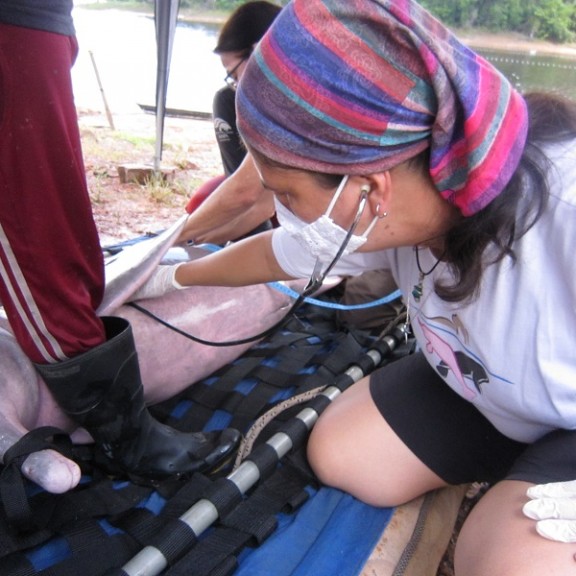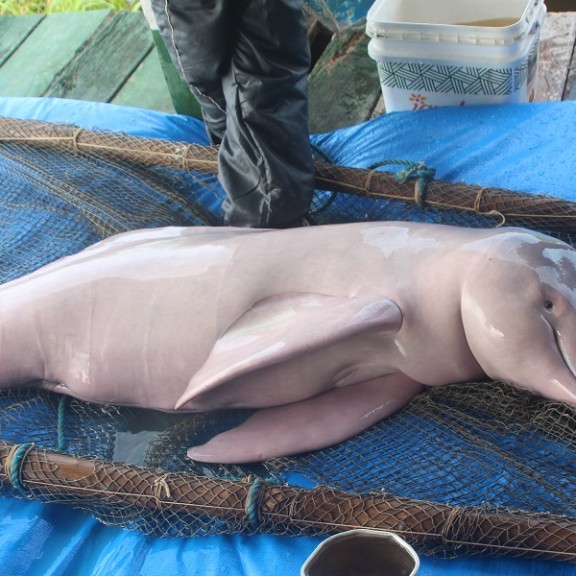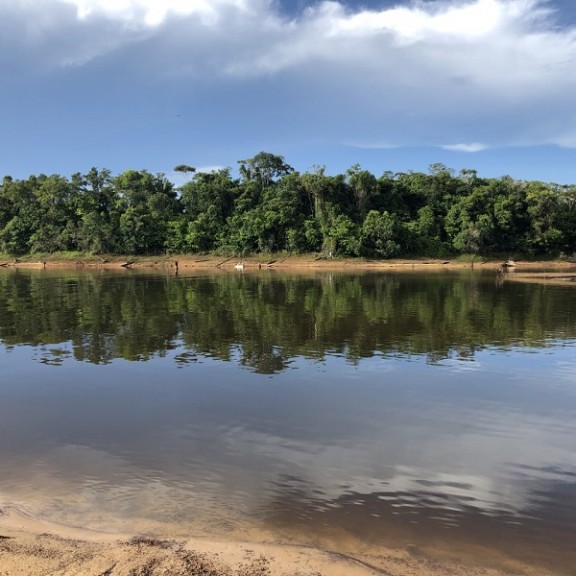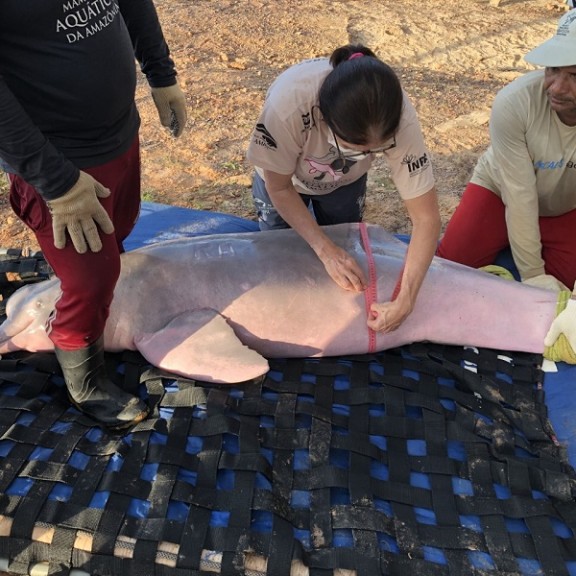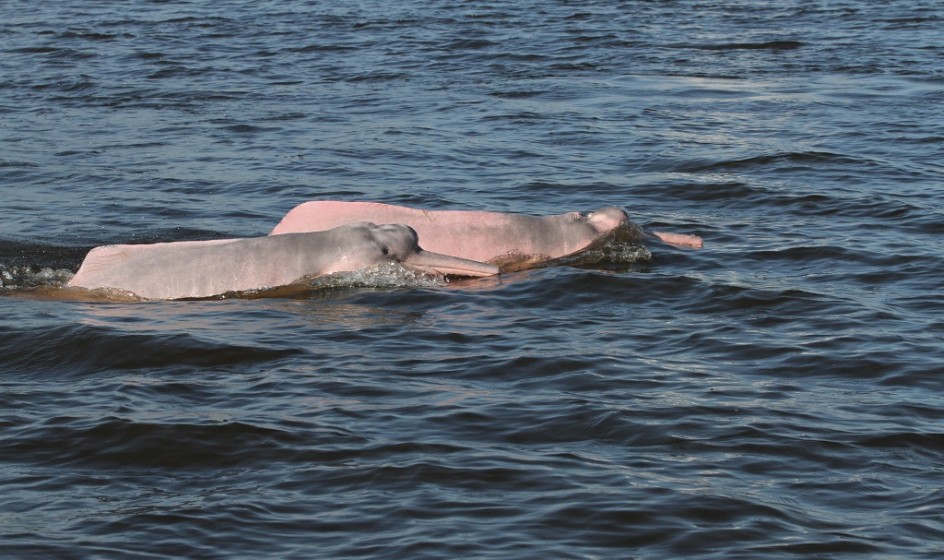

Araguaia River Dolphin

How does human activity and environmental deterioration affect the health of the Araguaia River dolphin?
The Araguaian river dolphin (Inia araguaiaensis) is a recently described species of freshwater dolphin that inhabits the Araguaia-Tocantins basin, central Brazil. The area is undergoing substantial anthropogenic changes while conservation efforts and scientific activities on its inhabiting species have been neglected. As being food chain top predators with long lifespan, dolphins may be considered as sentinels for monitoring environmental conditions. The health and body condition of wild dolphins can be used not only to evaluate relationships between exposure to biological and chemical agents and adverse health effects, but also to evaluate their proper access to dietary prays and locations.
In this context, the project aims to establish baseline values from apparently healthy Araguaian river dolphins sampled in an area with low human activity and compare these data with health values of dolphins sampled in an area with high human activity and environmental degradation. Finally, we aim to investigate whether the Araguaia River dolphin can be used as sentinels of the aquatic environment. The information provided may be used to foment local and federal regulations on strategic actions for the conservation of this endangered species.
A big thank you to Zoo Nuremberg whose kind donation has made this project possible!
Species: Araguaia river dolphin (Inia geoffrensis)
Region: Brasil
Implementing Partner: National Institute of Amazonian Research
Funding period: January 2022 - December 2022
Project goals
- To investigate the health and body condition of two different populations of Araguaian river dolphins – one in a relatively undisturbed and one in a disturbed and degraded habitat – and assess the impact of the disturbance as well as conservation measures
- To assess whether the Araguaia River dolphin health and body condition can be used as sentinels of the aquatic environment
Activities
- To capture and sample 25 dolphins from areas with low human activity, assess their body condition and analyse different health parameters
- To investigate potential zoonotic and/or epizootic infectious diseases by conducting DNA analyses
- To compare received data between the highly impacted area with the lower impacted area

